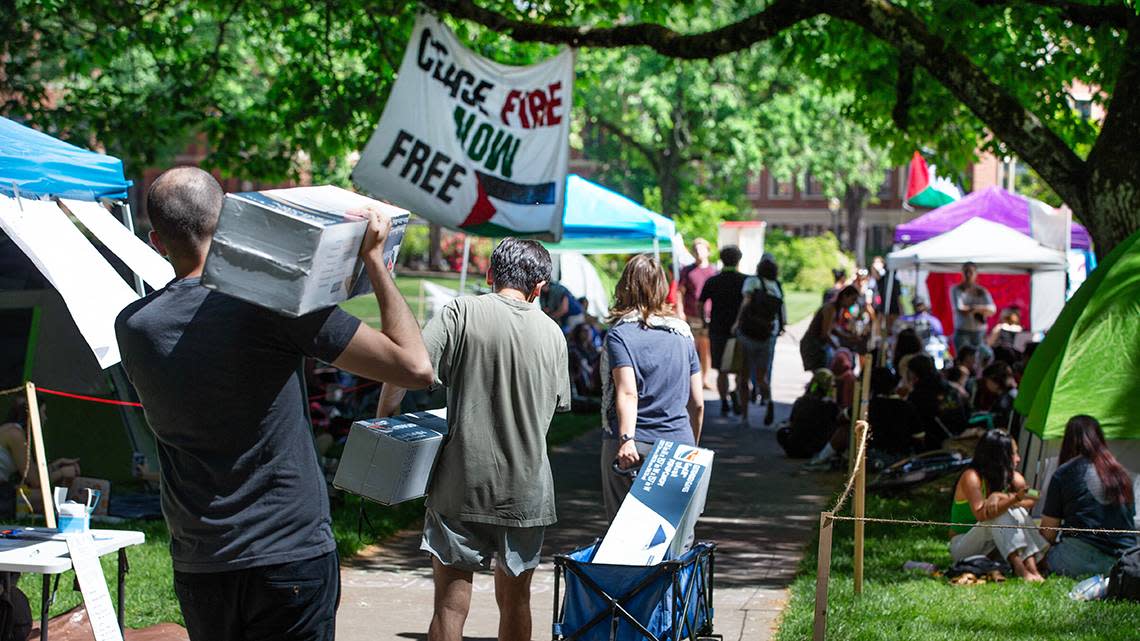Young adults aren’t disconnected. But the news media needs to engage us where we are | Opinion

It was a routine of mine, to drive from my home in the suburbs up to Kansas City and back to the empty roads south of my house. I borrowed this pastime from my older brother, who often did the same thing. This was part boredom — after school and homework, I couldn’t do much else but drive around with friends and look at the sunset on the fields — and part my age.
I felt too young to do anything of substance and too old just to sit at home.
This was a trend for us my high school, being old enough to want to do impactful and exciting things but never getting taken seriously. I remember during the height of the March for Our Lives movement, a group of students planned a walkout in solidarity against gun violence in schools.
This happened in high schools across the nation, but it felt like here, we were doing nothing. From the preplanned take-home assignments the teachers made or the changes to accommodate the walkout, I didn’t feel it was being taken as seriously as it should have.
I’ve lived in the Kansas City area for 20 years, while most of the last three years were spent at college in Evanston, Illinois, at Northwestern University. I’ve witnessed dozens more forms of activism on my college campus. Whether it was an encampment with tents supporting Palestine or a small table advocating for bird protection, everything seemed to be taken more seriously than the school-wide walkout planned in high school.
I couldn’t help but wonder if it was because we were a couple years older that my peers and I were finally being listened to, or if it was the change in our environment.
At college, everyone was the same age and we were judged primarily by our peers. Our age became the motivation and pathway to speak on certain topics, not a hindrance, and I wondered if this is what made us frustrated with the news as young adults. Are we listened to or is this another high school walkout situation?
The pro-Palestine encampment at my college campus lasted more than a week, similar to the events on Columbia’s campus in New York City and nearer to home in Kansas and Missouri. The conflict between the students at the encampment at my school and the administration attracted Chicago news outlets and resulted in an agreement to increase transparency about university investments and increase support for all students affected by the conflict on campus.
Even the smaller activists were seeing success on campus. The bird activists succeeded as the university put dots on our glass library to protect birds from flying into the building. I watched a group of men for a couple of days putting sheets of dots on the windows and wondered if this had been anywhere on the administrators’ minds before the students advocated for the change.
I decided to come home for the first summer in three years this year, to work with The Kansas City Star’s Opinion team. As I read and learned more about opinion pieces, I realized this side of the news was a way young adults could comment and bring up new and overlooked topics, such as the birds.
My age is one of my most important identities. Age can mean experience as you grow older but young people have the opportunity and experiences to provide a new perspective on what is important to see in the news. We care about different things and can connect with an entirely new population of people, looking at our community with fresh eyes.
Incorporating younger perspectives in the news and opinion pieces is what can revitalize news audiences and more effectively create change in things that matter to us.
Divya Gupta is a Kansas City Star Opinion intern. She is a Leawood, Kansas, native and a journalism and economics student at Northwestern University in Evanston, Illinois.

